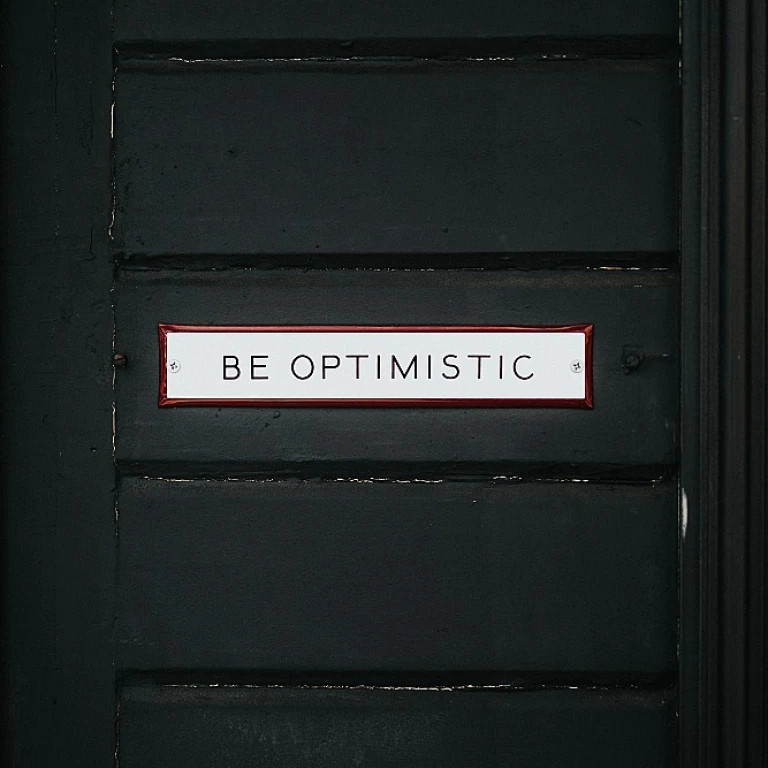
Understanding team resilience
Getting to grips with team resilience
Team resilience is more just a buzzword – it's the secret sauce that keeps a team rolling, no matter how many curveballs life throws their way. But what exactly does it mean? The American Psychological Association defines resilience as the process of adapting well in the face of adversity, trauma, tragedy, threats, or significant sources of stress. This ain't just about bouncing back – it's about bouncing forward, adapting, growing, and improving.
Why should leaders care about resilience? Well, for starters, resilient teams are more productive. According to a 2018 study by Gallup, highly resilient employees were found to be 14 percent more productive than those with a low resilience score. That productivity boost translates to higher revenue. Harvard Business Review also highlighted that companies with resilient teams report higher employee satisfaction and lower turnover rates. Now that's a win-win, don't you think?
Resilience in practice: beyond the 'feel-good' factor
Okay, so building resilience sounds like a good idea. But it's not just about feel-good moments and hugging it out after a tough project. It's woven into the very fabric of how a team operates. Think of it like this – resilience encompasses emotional, cognitive, and physical aspects. A study by McKinsey found that the top performers in any field tend to have higher levels of resilience, showing better stress management, clearer thinking under pressure, and even fewer physical illnesses.
Plus, don't overlook the role of leadership in building resilience. Resilient teams often have leaders who promote psychological safety – the assurance that team members can speak up, share ideas, and fail without fear of blame or ridicule. Google’s Project Aristotle found that psychological safety was the most crucial factor in building effective teams. Leaders who can foster this safety net are half the battle won in building resilience.
The science behind resilience
You might wonder if there's more to resilience than just positive thinking. Spoiler alert: there is! According to the American Journal of Psychiatry, resilience can be linked to neural circuits involving emotional regulation, such as the prefrontal cortex and amygdala. Work by Columbia University's George A. Bonanno has shown that exposure to moderate stress can actually build resilience over time – it's a case of what doesn't kill you makes you stronger, literally.
But mind you, it’s not an automatic process. Harvard Medical School’s Center for Workplace Health Research underscores the necessity of a supportive environment for resilience to grow. Simply put, bosses who jerk their employees around aren’t going to get far on the resilience scale. It’s also supported by real-world examples – think of the way the New Zealand All Blacks rugby team comes together after each game for a debrief, learning from mistakes collectively, reinforcing their resilient mindset.
Building a tough team doesn’t mean subjecting them to endless stress. Instead, encourage regular reflection, provide adequate support, and make resilience a part of your team's DNA.
To get a deeper understanding of the role of CHROs in nurturing such environments, check out this helpful resource on what is a CHRO.
Strategies for fostering resilience
Building a culture of trust
Trust is the bedrock of any resilient team. A 2020 study by Harvard Business Review found that employees in high-trust companies reported 74% less stress, 106% more energy at work, and 50% higher productivity. It's clear that fostering trust leads to a more engaged and resilient workforce.
The first step in building trust is transparency. Leaders need to communicate openly and honestly, sharing both good and bad news. This transparency builds a culture where team members feel valued and respected.
Another key aspect is reliability. Holding up your end of the bargain as a leader creates a sense of security and dependability among your team. Set realistic expectations, follow through on commitments, and ensure that everyone understands their role.
Empathy also plays a crucial part. Understanding and addressing your team members' concerns shows that you care about their well-being. Encourage a balance between work and life, and be flexible when personal issues arise.
Embracing flexibility
Flexibility isn't just about allowing remote work or flexible hours, although that certainly helps. It's about adapting to the needs of your team and the challenges they face. The COVID-19 pandemic underscored the necessity of flexible work arrangements, with a Gartner report revealing that 82% of company leaders plan to allow remote work at least some of the time moving forward.
Flexibility can be demonstrated in myriad ways. For instance, encouraging employees to take mental health days or allowing them to set their own deadlines when possible can significantly enhance resilience.
Case studies like that of Netflix, which offers unlimited vacation days, show that employee performance and motivation often rise when given more control over their schedules. This level of trust in employees to manage their own time fosters a resilient and dedicated team.
Investing in continuous learning
A team that learns together grows together. Continuous learning opportunities not only enhance skills but also build a resilient mindset. According to LinkedIn's 2021 Workplace Learning Report, 76% of Gen Z employees believe learning is essential to their career success.
Offer regular training sessions, workshops, and access to online courses. Encourage your team to pursue personal interests and professional development. When employees feel they are growing and evolving, they are better equipped to handle setbacks and adapt to change.
Real-life examples of this approach can be found in companies like Google, which allocates 20% of an employee’s time to personal projects. This commitment to growth fosters innovation and resilience.
To dive deeper into effective employee engagement strategies, read more here.
Real-life examples of resilient teams
Success stories: building unshakeable teams
Ever wondered why some teams bounce back from hardships while others falter? Let’s peek into the nitty-gritty of resilient teams that lead the pack.
NASA’s Apollo 13 mission
The Apollo 13 mission might ring a bell—immortalized by the phrase “Houston, we have a problem.” What isn’t as famous is how the team's resilience and problem-solving saved the mission. According to NASA reports, the crew and ground support exhibited extraordinary improvisation skills and tenacity under pressure, turning a potential tragedy into a triumphant recovery (NASA, 1970).
Google's Project Aristotle
Take Google’s Project Aristotle as another prime example. The tech giant’s internal research revealed that psychological safety—where team members feel safe to take risks without fear of retribution—bolstered team resilience. As highlighted in their findings, teams with high psychological safety were more innovative and effective (Google, 2015).
The British Airways turnaround
Remember British Airways in the ‘80s? Probably not for good reasons. They were struggling, but when Colin Marshall stepped in as CEO, he restructured the company with a strong focus on teamwork and customer service. Fast forward a few years, British Airways turned into the “world’s favourite airline,” thanks to a resilient restructuring effort (Forbes, 2005).
Lemons to lemonade: overcoming barriers to resilience
Building a resilient team isn’t always smooth sailing. So, what’re the common pitfalls, and how do top CHROs tackle them?
Combating burnout and stress
The Mayo Clinic warns that chronic workplace stress leads to burnout, impacting team cohesion and performance. Top CHROs like Donna Morris from Walmart advocate for mental health initiatives to support employee well-being, reducing stress and promoting long-term resilience (Mayo Clinic, 2021; Business Insider, 2022).
Effective communication
Lack of clear communication can cripple team morale. Bridgestone's CEO, Sue Carlson, emphasizes transparent communication channels. When Bridgestone faced supply chain disruptions, Carlson’s open communication with her team fostered trust and resilience—leading to quicker problem-solving (HBR, 2021).
Connecting the dots: making a lasting impact
From space missions to airline revivals, these real-world examples illuminate the blueprint for fostering resilient teams. Sticking points like stress and poor communication are barriers—but they’re not insurmountable. Leaders who focus on mental wellness, transparent dialogue, and psychological safety turn these challenges into catalysts for overall team resilience.
To dive deeper into how CHROs drive business success by unlocking human potential, click here.
Overcoming challenges in building resilient teams
Hurdles in cultivating resilient teams
Alright, let’s get down to brass tacks. Building a resilient team isn’t always a walk in the park. Sometimes, the challenges you face might knock the wind out of your sails, but hey, that’s part of the game, right?
One big stinker in our path is resistance to change. You know, the classic ‘we’ve always done it this way!’ mindset. A study by McKinsey found that 70% of change programs fail to achieve their goals, largely due to employee resistance and lack of management support. It’s like herding cats sometimes.
Then, there’s the trust factor. Trust isn’t something you can whip up overnight. It’s earned. Gallup reports that only one in three employees strongly agree that they trust the senior leadership of their organization. That's a wrench in the gears, for sure.
Handling high-stress situations without burning out is another thing. A survey from CareerBuilder revealed that 61% of employees are burned out on the job. Even the most resilient teams can hit a wall if stress isn't managed properly.
Communication breakdowns. Ugh, these are the worst, right? A cover story by Harvard Business Review emphasized that clear, open communication is crucial, yet tricky to maintain. Miscommunication can create a ripple effect of problems, throwing off the team's mojo.
And let’s not forget about diversity. Building a team from a wide range of backgrounds fosters creativity and resilience, but only 34% of executives say that diversity and inclusion is a top priority at their company, according to Deloitte.
So, how do you leap over these hurdles? It’s like this... You need to foster a culture where change is not just accepted but embraced. It’s vital to show, not just tell, your teams that they can trust the leadership. Avoiding burnout means actively promoting work-life balance. Keeping communication lines wide open and practicing what Harvard Business Review preaches about clear communication is key. And finally, diversity isn’t just a checkbox; it’s an ongoing commitment to creating a mix of perspectives that strengthens the team resilience.
Want to dig deeper into how to keep your team together through thick and thin? This blog on employee retention will give you some golden nuggets of wisdom.














